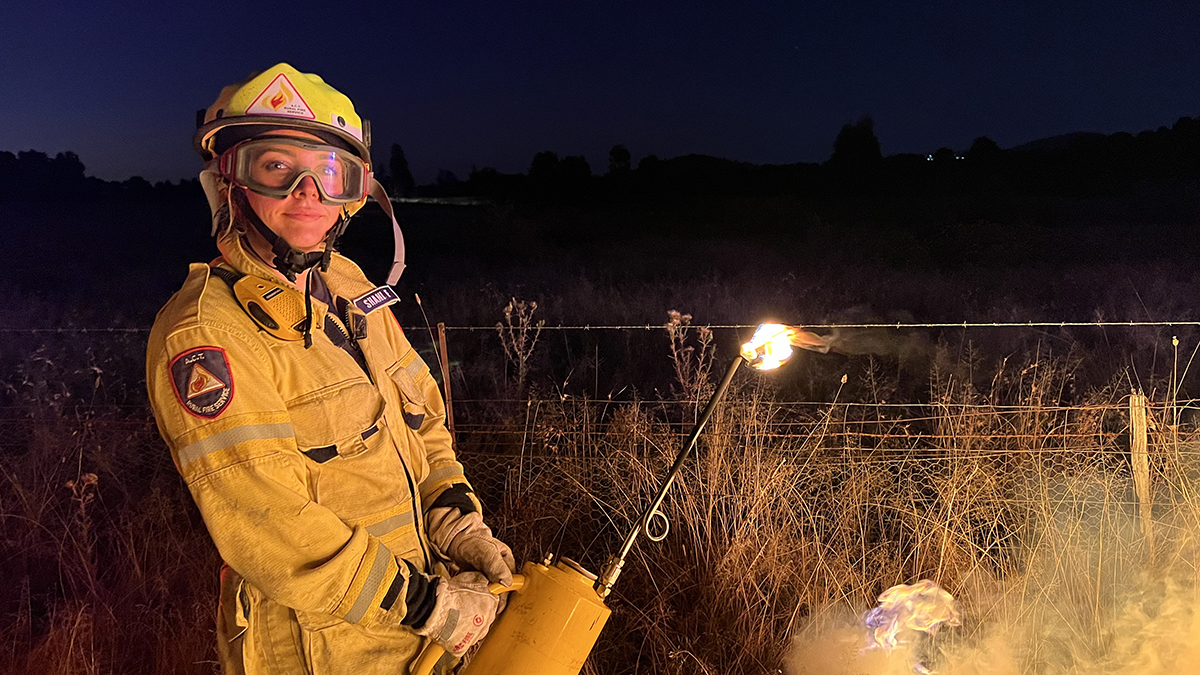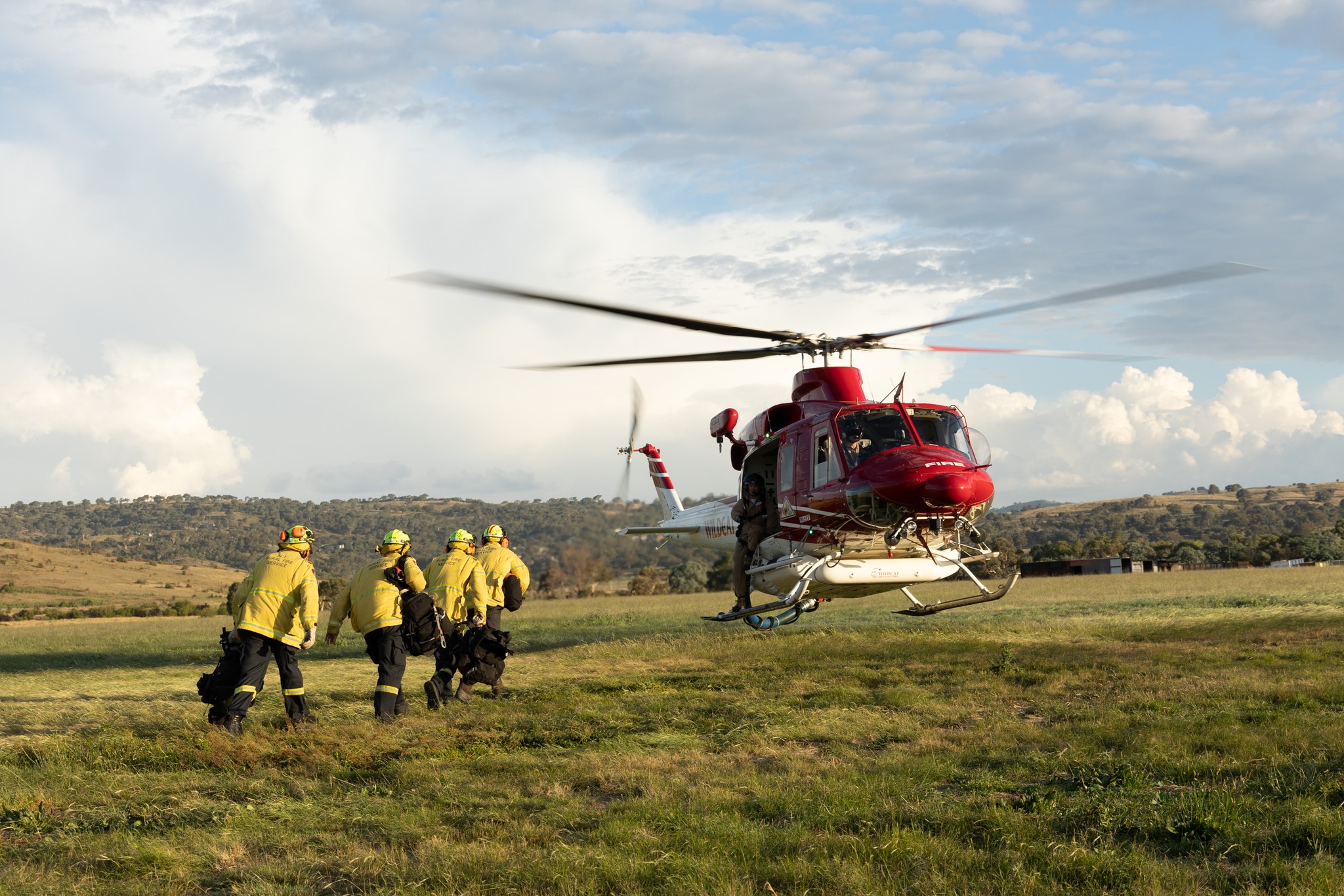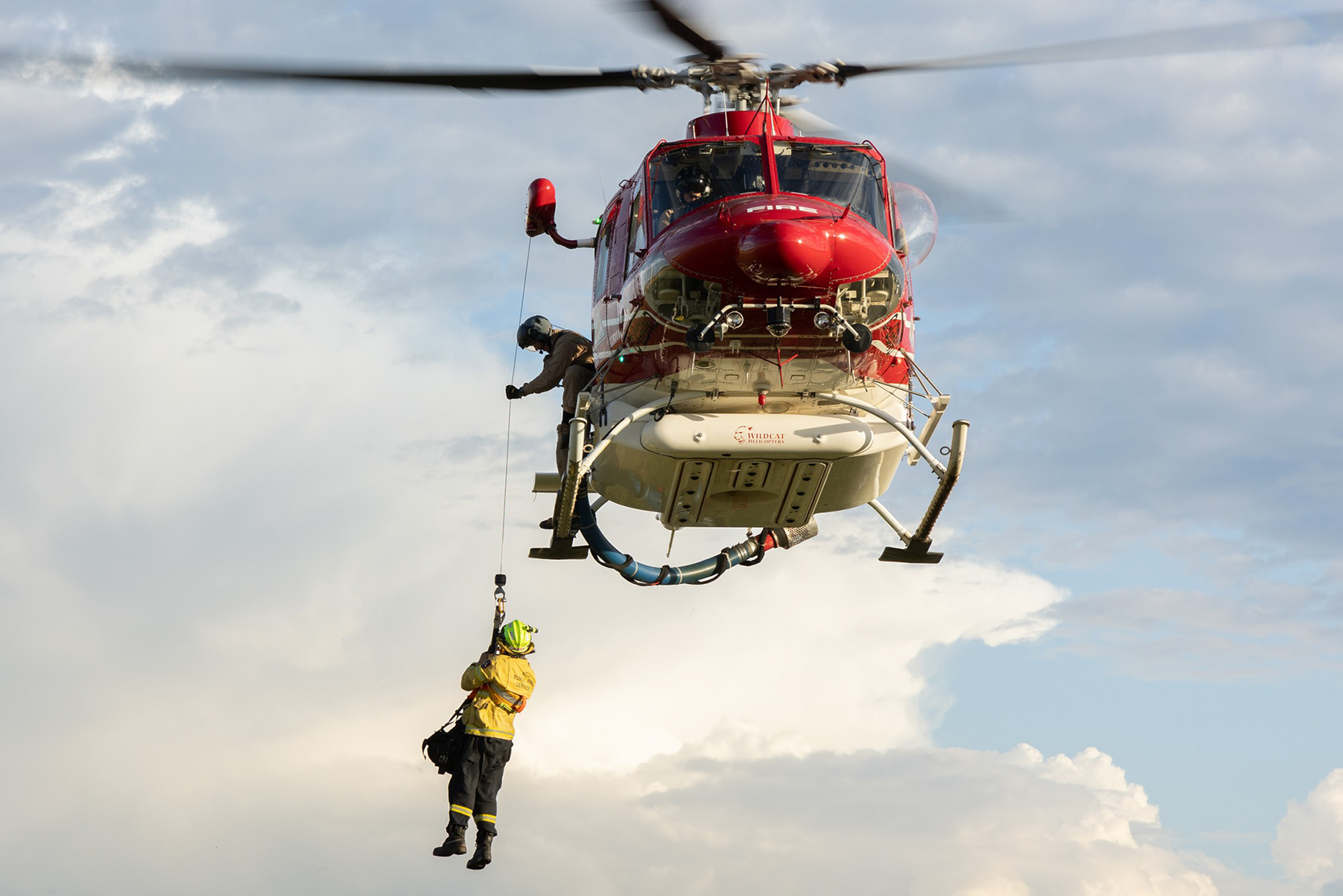Prescribed Burns
Prescribed burns are an important land management technique that can be used to reduce fuel loads, or for environmental, agricultural or cultural purposes.
The ACT Rural Fire Service (ACTRFS) works with rural land holders, and the ACT Parks & Conservation Service, to conduct prescribed burns and manage fuel loads.
Why do we undertake prescribed burns?
Hazard Reduction
One of the most common reasons to undertake a prescribed burn is to reduce fuel loads, which can reduce a bushfire's severity and lessen its impacts, in comparison to the impacts of the same fire burning through heavy fuels.
Managing forest and grassland fuel loads enables firefighters to more quickly control most fires with less area burnt.
Ecological
Ecological burns are prescribed burns that focus on improving the habitat for threatened plants and animals, as well as reducing bushfire risk.
This improves diversity of plant species and the opportunity to germinate new seedlings.
Agricultural
Agricultural management is a type of prescribed burn done on private land to support pasture improvement, weed management and pile burns.
Rural land holders in the ACT play a key role in the buffer zone between the city’s urban edge and the Territory’s nature parks, and agricultural burns are a good collaboration between the ACTRFS and local land holders.
Cultural
Cultural burning is a cultural fire practice used by First Nations people to improve the health of the Country and its people. It has been used for 60,000 years to manage land, plants, and animals.
Cultural prescribed burns are slow-burning, relatively cool fires, usually lit at night or early in the morning, when winds are gentle, and night dew can keep the fire cool.
The ACT Government recognises the importance of incorporating traditional Ngunnawal culture, knowledge and values into fire management practices.
How are prescribed burns controlled?
Each prescribed burn is the result of careful planning, consultation and monitoring, and goes through a rigorous approval process.
Even after the approval process, it’s not unusual for prescribed burns to be cancelled or ceased due to unfavourable flora or weather conditions.


What to do if you see smoke?
All prescribed burns and other active incidents across the ACT are shown on the ACT Emergency Services incident map
Matching the location of smoke with a current incident means you can confirm emergency services are aware of the fire and attending the scene.
In a life-threatening emergency, or if you see an unattended fire, call Triple-Zero (000)
Fire Towers
There are four fire towers in the ACT, located strategically on high-vantage points in the north, south, east and west of the Territory.
On days of increased bushfire risk, these towers are crewed by specialist operators from the ACTRFS, who monitor the surrounding areas and alert the Communications Centre to any signs of a potential bushfire, or a change in bushfire activity.
These towers are also fitted with high-tech cameras, which are monitored remotely from ESA Headquarters, on days when the towers aren’t staffed.
Aerial Firefighting
During the fire season, aerial firefighting helicopters and intelligence gathering aircraft can be stationed at the ACTRFS Helibase in Hume, ready to protect Canberra and the surrounding region from the threat of bushfire.
Firebird 100 is an intelligence gathering helicopter with high-tech infrared and real-time video cameras with spatial data live streaming back to base.
Waterbombing helicopters can transport up to six remote area firefighters and their gear into difficult terrain, or drop large amounts of water during a bush or grass fire.
Remote Area Firefighting Teams (RAFT)
When bushfires start in difficult to reach terrain, the ACTRFS can deploy its Remote Area Firefighting Teams (RAFT).
These specialist crews are certified in winching - a technique that is used to insert and extract firefighters when there is no suitable place for a helicopter to land.
RAFT teams are unable to carry water, and will often use dry firefighting techniques like building containment lines or back-burning instead. In some cases, the teams can call-in aerial support from above to assist putting out blazes in remote locations.






